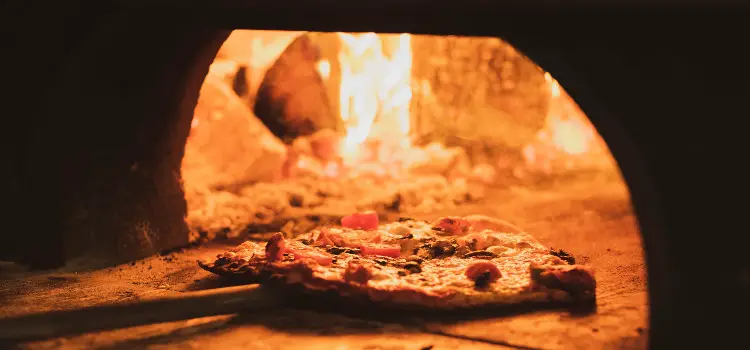There are many debates when it comes to the perfect pizza crust. Some people prefer a thin and crispy crust, while others love a fluffy and doughy crust. There is one debate, however, that is often overlooked: should a brick oven pizza crust be black?
Contents
We will discuss the question in detail with some quality insight on the topic.
Should A Brick Oven Pizza Crust Be Black?
This is a question that has been debated by pizza lovers for years. Some say that a blackened crust is the only way to enjoy brick oven pizza, while others argue that it takes away from the flavor of the toppings and should be avoided at all costs.
So, what is the answer? Well, there are pros and cons to both sides of the argument. In the end, it really comes down to personal preference. Let’s take a closer look at each side of the debate.
Argument For A Blackened Crust
Those who argue in favor of a blackened crust often say that it adds a unique flavor to the pizza. They claim that the char from the oven gives the crust a smoky taste that you can’t get from any other type of pizza.
They also say that a blackened crust is a sign that the pizza has been cooked properly. A well-done crust should have a slight char to it, and this can only be achieved in a brick oven.
Argument Against A Blackened Crust
On the other hand, those who argue against a blackened crust say that it takes away from the flavor of the toppings. They claim that all you can taste is the char from the oven, and this overpowers the taste of the sauce and cheese.
Now that we’ve looked at both sides of the argument, it’s time to make a decision and the decision completely depends on your personal preferences.
Why Is My Pizza Base Black?
If you’ve ever had a pizza with a blackened crust, then you know that it’s not always intentional. Sometimes, the pizza dough gets overcooked and this can cause it to turn black.
When this happens, it’s usually because the pizza was cooked for too long or at too high of a temperature. This is why it’s important to pay attention to the cooking time and temperature when you’re making pizza at home.
Here are a few reasons why your pizza base might be black.
- You overcooked the pizza.
- You cooked the pizza at too high of a temperature.
- The pizza dough was overworked and not given enough time to rest.
Here are the ways to avoid getting pizza black.
- Use a pizza stone to evenly cook the dough.
- Preheat the oven so that it’s hot when you put the pizza in.
- Don’t overcook the pizza. Check it after about 12 minutes.
- Let the dough rest for at least 30 minutes before shaping it.
Difference Between Charring And Burning
It’s important to note that there is a difference between charring and burning. Charring is when the crust turns black but is still cooked through. Burning, on the other hand, is when the crust is burnt and dry.
Pizza should never be burnt. If your pizza has a burnt crust, it means that it was cooked for too long or at too high of a temperature. This will make the crust dry and hard, and it will ruin the flavor of the pizza.
How To Stop Pizza Base Burning In A Pizza Oven?
If you’re cooking pizza in a brick oven, there are a few things you can do to prevent the crust from burning.
Bake The Pizza Higher Up In The Oven
One way to prevent burning is to bake the pizza higher up in the oven. This will allow the heat to evenly cook the crust without charring it. If you’re using a pizza stone, place it on the top shelf of the oven. If you don’t have a pizza stone, you can place the pizza directly on the oven rack.
Buffer The Direct Heat With A Baking Sheet
The next tip to avoid burning is to place the buffer element between the heating element and the buffer. This can be done by placing a baking sheet on the rack below the pizza stone. This will help to evenly distribute the heat and prevent charring.
Remove The Excess Flour
Too much flour can also become the reason for a burn. When you’re shaping the dough, make sure to remove any excess flour. This will help to create a thinner crust that won’t get burnt in the oven.
Rotate The Pizza Regularly
Proper rotation of the pizza is also important to prevent burning. Every few minutes rotate the pizza so that it cooks evenly on all sides. This will help to prevent anyone’s side from getting overcooked.
Conclusion
After looking at both sides of the argument, we’ve come to the conclusion that whether the crust should remain black or not completely depends on personal preference.
Pizza is meant to be enjoyed, and it should be cooked in a way that allows all of the flavors to shine through. A burnt pizza crust will only ruin the taste of the pizza, so it should be avoided.
If you’re looking for a crispy crust, we recommend following the tips above to prevent burning. And if you’re looking for a softer crust, simply bake the pizza for a shorter amount of time. No matter what your preference is, make sure to enjoy your pizza!

